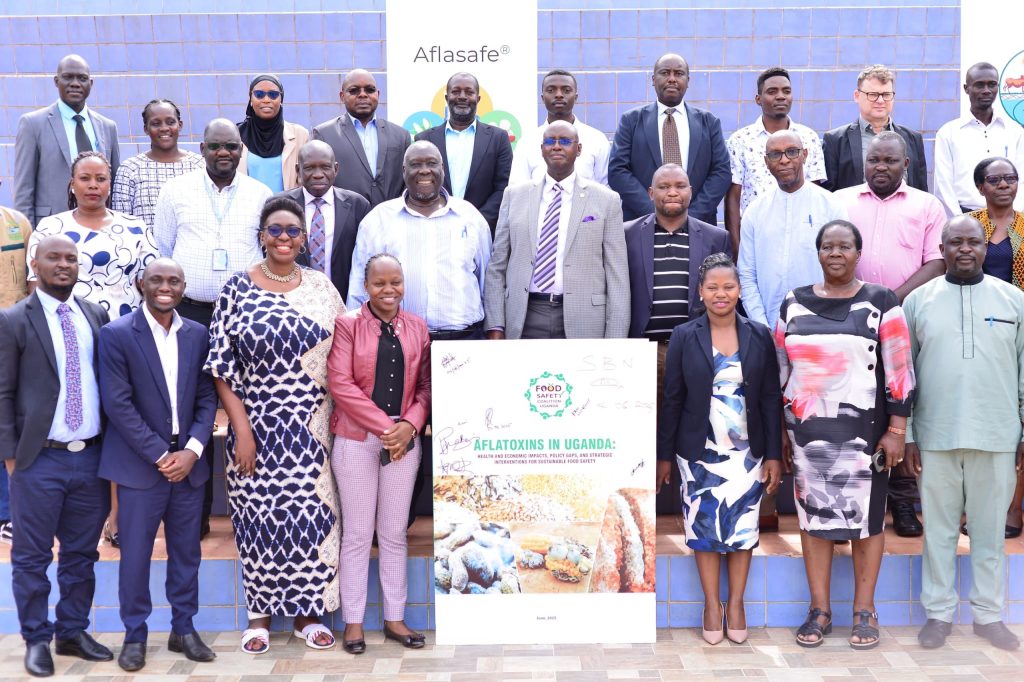
The Minister of State for Agriculture in charge of Animal Husbandry, Bright Rwamirama has called for the revival of traditional food preservation methods to reduce contamination of food by aflatoxins. He cited the example of groundnuts, which he said traditionally, these were kept in their shells and only opened and pounded using wood to make it ready for cooking.
“With that method, you don’t have groundnuts getting moldy and later on developing in cancer or even getting small metal particles, usually found in groundnuts and other processed food,” he said.
He made the call on Wednesday, while launching a report titled Aflatoxins in Uganda: Health and Economic Impacts, Policy Gaps and Strategic Interventions for Sustainable Food Safety, that was authored by a team from the Food Safety Coalition of Uganda.

The dissemination breakfast meeting was organized by the National Agriculture Research Organisation, through the National Livestock Resources Research Institute (NaLRRI).
The authors include Prof Achileo Kaay from Makerere University, Benard Bwambale from the Food Safety Coalition Uganda, Aggrey Atuhaire from the Food and Agriculture Organisation and Henry Richard Kimera, team leader Consent Uganda.
Rwamirama also called on the public to make use of the natural methods of eliminating aflatoxins that are being developed by the National Agriculture Research Organizations. Examples of such innovations include the use of aflasafe, NARO.Explaining the innovations at NARO, Dr Moses Motovu a senior research officer explained that they have developed Biocontrol Innovations like Aflasafe, a natural fungus that reduces aflatoxin contamination in crops. Aflasafe binds bad toxins that could find their way in the stored grains.
The report launch is part of activities to mark World Food Safety Day, which will be celebrated on the 7th of June. This year’s Global theme is Food Safety: Science in Action for Uganda, the events will be held under the theme Securing Safe Food through Innovation: Uganda’s Science in Action.
Apart from an increase in food borne diseases, the report showed health and economic impact of aflatoxins that usually affect food items such as maize, groundnuts among others.In health aflatoxins cause rapid liver failure, digestive complications, and death, while chronic exposure is strongly linked to liver cancer and other long-term health effects, added the report.
The health burden according to the report translates into significant economic costs, with Uganda spending approximately $910,000 annually on aflatoxin-related health services and facing potential economic losses of up to $577 million per year due to trade restrictions and reduced productivity among others.
Commenting on the development, Jean-Marie Byakweli – Policy Officer the Food and Agriculture Organisation called for decentralized messaging of food safety management to include local government leaders were most of the food is produced from and where most of the contamination takes place.
Agnes Kirabo from the Food Rights Alliance called for the translation of aflatoxin management information into the local language accompanied with images to help consumers who may not be able to read.
Ends

